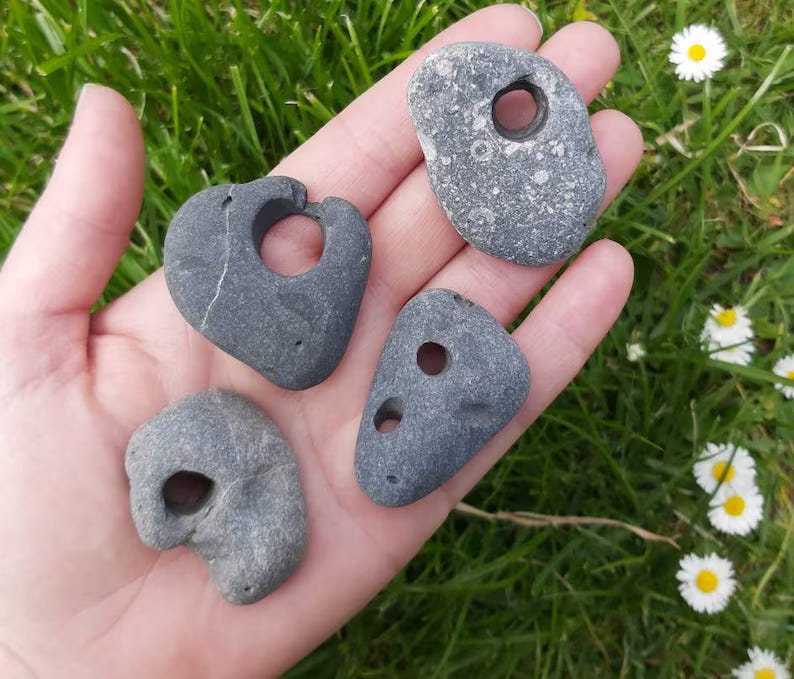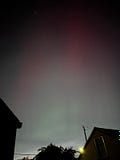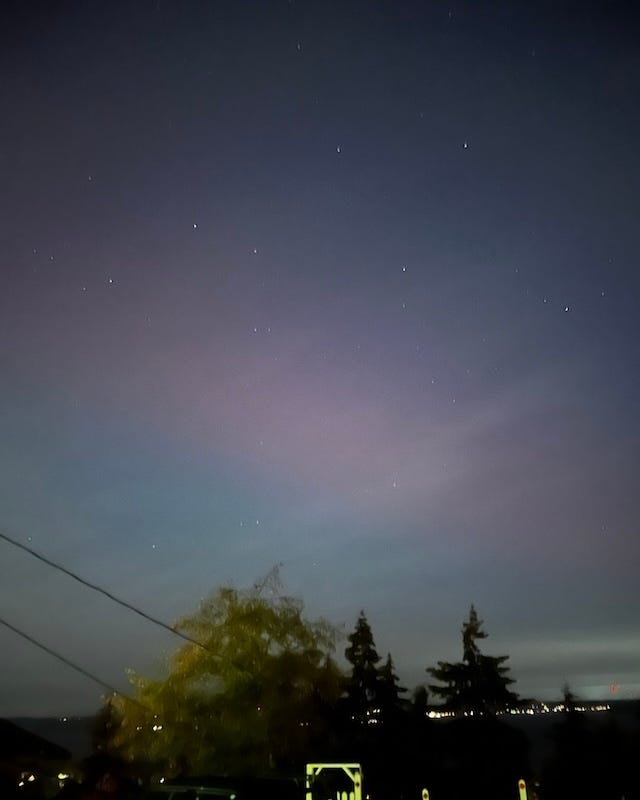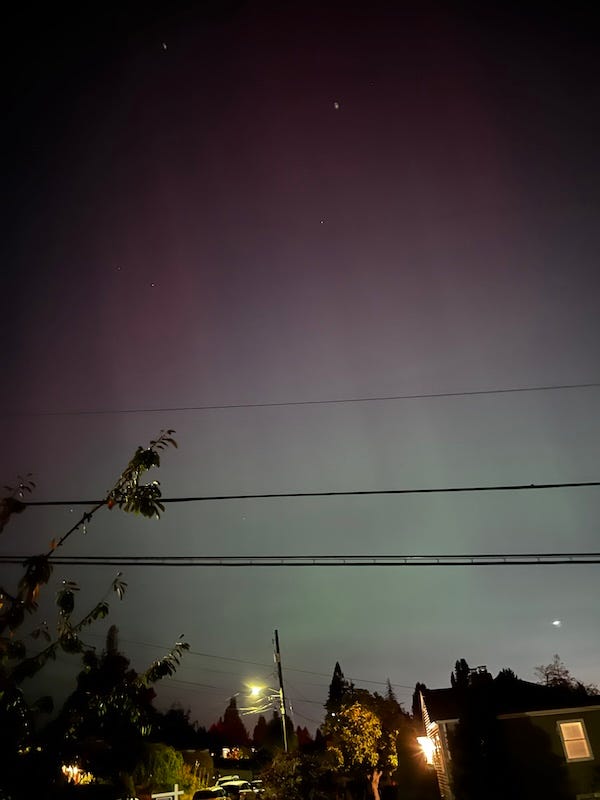This past Wednesday night, as you’ll know from the social media feeds of, um, everyone, the auroras made another dazzling appearance in our skies. Hurray!
I live in a fairly northerly city—Seattle—so in that regard I stand a decent chance at seeing the auroras when the planetary K-index amps up. (The what now? Yeah, more on that in a minute.) That said, Seattle is also one of the most consistently cloudy cities in North America, plus it is light-polluted, so those factors knock my chances down a few pegs.
Nevertheless, one thing I learned from that far more fabulous night in May when the auroras painted the whole world was that my iPhone camera did a better job at picking up the lights and colors than my own eyes did. So on Wednesday night, though I could barely see anything out of the ordinary even with my glasses on, I pointed my phone up at the northern sky and took pictures. And it worked!
And the thought entered my mind: my phone camera is like a hagstone.
A hagstone is a rock with a naturally formed hole through it. You may have found such a one on a beach or elsewhere. We humans have always been intrigued by them, as evidenced by the plethora of folkloric beliefs surrounding them. Most commonly, hagstones have been considered amulets that protect against hexes or other supernatural hazards. But in the faery-lore circles I read and write in, I have also encountered the belief that if you look through the hole in a hagstone, you can see into faeryland or other spirit worlds, and/or see the fae/spirits in our own world who otherwise are invisible.

Here I am, then, looking through a little round lens in order to see the magical flickering lights that my human eyes cannot detect without assistance. Fae, Northern Lights—equally enchanting, really. Maybe “Hagstone” should become my phone’s nickname.
Granted, the reason I couldn’t see the auroras unaided was largely the fault of technology, in the form of light pollution, and to get past that, I had to use a different form of technology. It’s somewhat less magical when put that way. Please do absorb the takeaway that light pollution is awful and we humans need to mitigate it. But auroras are still super cool and worth the effort to see.
This weekend’s recommendation is a website: Bookmark the site Spaceweather.com and check it daily. It’s a simple, mellow one-page bit of news that tells you what intriguing things you might see astronomy-wise, and it’ll let you know if the auroras are likely to be visible. Over on the left column, scroll down to find a live map of the planetary K-index, which is a geomagnetic scale from 0 to 9. The higher the number, the better the chance of seeing auroras. Your aurora FOMO can be cured!






... oh, that's a delightful way to put it!